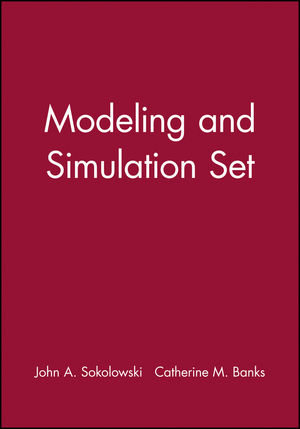Modeling and Simulation SetISBN: 978-0-470-55600-9
Hardcover
483 pages
August 2009
 |
||||||
Explores wide-ranging applications of modeling and simulation techniques that allow readers to conduct research and ask "What if?"
Principles of Modeling and Simulation: A Multidisciplinary Approach is the first book to provide an introduction to modeling and simulation techniques across diverse areas of study. Numerous researchers from the fields of social science, engineering, computer science, and business have collaborated on this work to explore the multifaceted uses of computational modeling while illustrating their applications in common spreadsheets.
The book is organized into three succinct parts:
Principles of Modeling and Simulation provides a brief history of modeling and simulation, outlines its many functions, and explores the advantages and disadvantages of using models in problem solving. Two major reasons to employ modeling and simulation are illustrated through the study of a specific problem in conjunction with the use of related applications, thus gaining insight into complex concepts.
Theoretical Underpinnings examines various modeling techniques and introduces readers to two significant simulation concepts: discrete event simulation and simulation of continuous systems. This section details the two primary methods in which humans interface with simulations, and it also distinguishes the meaning, importance, and significance of verification and validation.
Practical Domains delves into specific topics related to transportation, business, medicine, social science, and enterprise decision support. The challenges of modeling and simulation are discussed, along with advanced applied principles of modeling and simulation such as representation techniques, integration into the application infrastructure, and emerging technologies.
With its accessible style and wealth of real-world examples, Principles of Modeling and Simulation: A Multidisciplinary Approach is a valuable book for modeling and simulation courses at the upper-undergraduate and graduate levels. It is also an indispensable reference for researchers and practitioners working in statistics, mathematics, engineering, computer science, economics, and the social sciences who would like to further develop their understanding and knowledge of the field.
one-of-a-kind introduction to the theory and application of modeling and simulation techniques in the realm of international studies
Modeling and Simulation for Analyzing Global Events provides an orientation to the theory and application of modeling and simulation techniques in social science disciplines. This book guides readers in developing quantitative and numeric representations of real-world events based on qualitative analysis. With an emphasis on gathering and mapping empirical data, the authors detail the steps needed for accurately analyzing global events and outline the selection and construction of the best model for understanding the events data.
Providing a theoretical foundation while also illustrating modern examples, the book contains three parts:
- Advancing Global Studies—introduces the what, when, and why of modeling and simulation and also explores its brief history, various uses, and some of the advantages and disadvantages of modeling and simulation in problem solving. In addition, the differences in qualitative and quantitative research methods, mapping data, and conducting model validation are also discussed.
- Modeling Paradigms—examines various methods of modeling including system dynamics, agent-based modeling, social network modeling, and game theory. This section also explores the theory and construction of these modeling paradigms, the fundamentals for their application, and various contexts for their use.
- Modeling Global Events—applies the modeling paradigms to four real-world events that are representative of several fundamental areas of social science studies: internal commotion within an anarchic state, a multi-layered study of the Solidarity movement in Poland, uni-lateral military intervention, and the issue of compellence and deterrence during a national security crisis.
Modeling and Simulation for Analyzing Global Events is an excellent book for statistics, engineering, computer science, economics, and social sciences courses on modeling and simulation at the upper-undergraduate and graduate levels. It is also an insightful reference for professionals who would like to develop modeling and simulation skills for analyzing and communicating human behavior observed in real-world events and complex global case studies.



